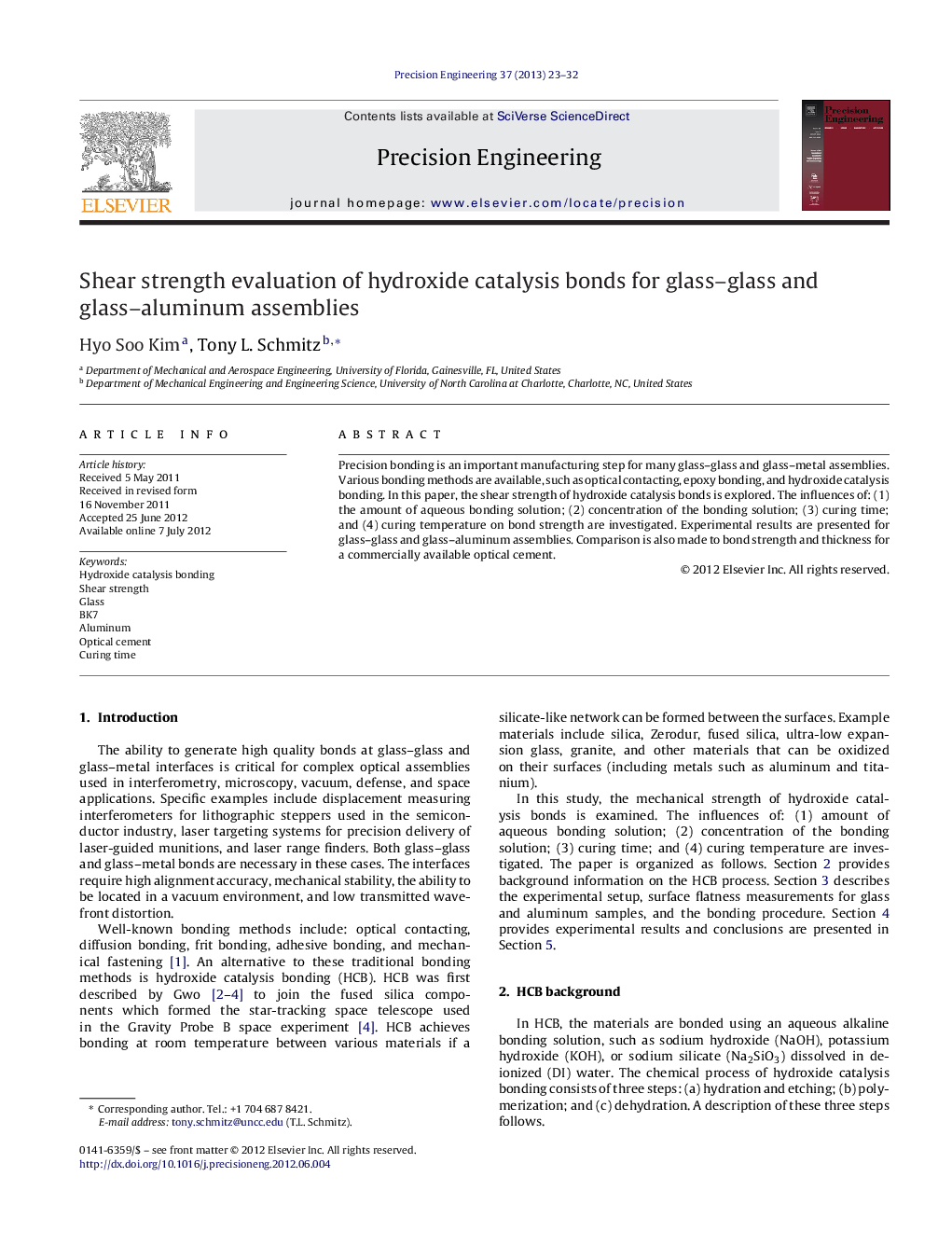| Article ID | Journal | Published Year | Pages | File Type |
|---|---|---|---|---|
| 806624 | Precision Engineering | 2013 | 10 Pages |
Precision bonding is an important manufacturing step for many glass–glass and glass–metal assemblies. Various bonding methods are available, such as optical contacting, epoxy bonding, and hydroxide catalysis bonding. In this paper, the shear strength of hydroxide catalysis bonds is explored. The influences of: (1) the amount of aqueous bonding solution; (2) concentration of the bonding solution; (3) curing time; and (4) curing temperature on bond strength are investigated. Experimental results are presented for glass–glass and glass–aluminum assemblies. Comparison is also made to bond strength and thickness for a commercially available optical cement.
► The shear strength for glass–glass, BK7–BK7, and aluminum–glass bonds produced using hydroxide catalysis bonding was evaluated. ► It was determined that the solution amount and concentration did not have a significant effect on bond strength for the sodium silicate solution tested here. ► It was found that the bond strength increased with extended curing times and elevated curing temperatures. ► A shear strength of >30 MPa was achieved for BK7–BK7 bonds.
